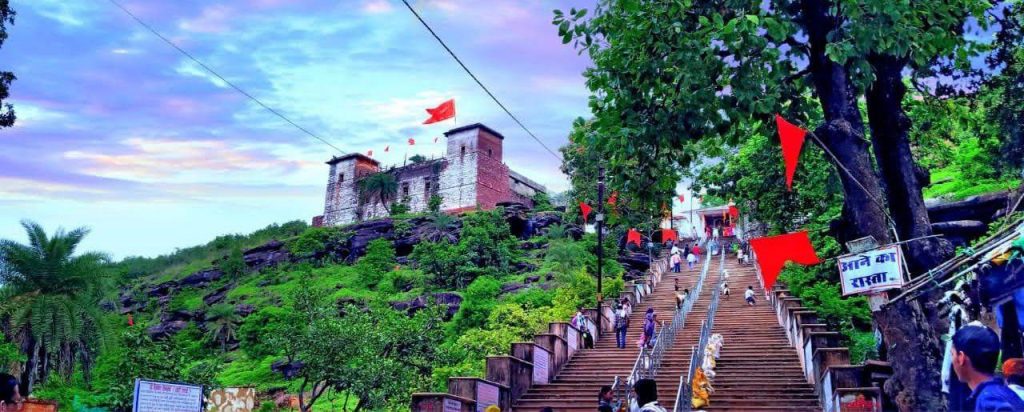
While cruising down the serene Kantoda road of Narsinghgarh, one hill rises in serene mystery — opposite the towering Narsinghgarh Fort mountain. That’s Gufa Hill Kantoda, a natural rock formation that is unexplored, untrodden, yet visually looming for all those who travel within this section of the forest valley.
Where Is Gufa Hill Located?
Gufa Hill lies on the Kantoda road, a picturesque and forested highway that links rural regions of Narsinghgarh with the inner city. The hill is clearly visible from the road, as directly in front of it lies the Narsinghgarh Fort mountain, rising like an eternal sentinel on the other side of the valley.
Many locals often pass it during travel, but few stop to explore the path that leads to its summit or the natural cave hidden within its belly — which gives the hill its name, “Gufa,” meaning cave.
Why Is It Called Gufa Hill?
The origin of the name “Gufa Hill” is the natural cave or rock shelter about halfway up the hill slope. It’s small, but in the past, as some locals say, saints and travelers used it for contemplation. It has become over time a peaceful spiritual and hiking spot, particularly for those who enjoy communing with nature or sitting in contemplative silence away from town noise.
It’s not a shrine or developed temple — simply a natural formation that has gained spiritual significance because of its remoteness and position.
A Natural Landmark Across Narsinghgarh Fort
What’s special about Gufa Hill is its location opposite the mountain of the Narsinghgarh Fort. If you are atop the higher slope of Gufa Hill, you have an ideal panoramic view of the old fort as well as the enormous jungle belt that encircles it.
The whole valley in between is a living painting — thick green leaves, mountain bends, and the soft golden summits of the palace walls of the fort shining in light. It’s something even professional photographers dream of.
How to Reach Gufa Hill Kantoda
Reaching Gufa Hill is very easy:
- Begin from Narsinghgarh town and travel along the Kantoda road going outwards
- As you drive through the covered slope, glance towards your left
- Gufa Hill will appear almost directly in front of the fort mountain
- There is a small path at the base, often used by cattle herders and local youth
While there is no formal trekking path, the climb is gentle and manageable for hikers with average fitness. It’s best to go early in the morning or before sunset to enjoy the cooler breeze and safer daylight conditions.
Who Should Visit Gufa Hill?
Gufa Hill is most appropriate for:
- Nature enthusiasts who want to visit an unspoiled terrain
- Travel writers in search of distinctive perspectives of Narsinghgarh
- Individual trekkers and hikers who venture into new routes
- Residents seeking a secluded area to think, ponder, or pray
- Photographers and vloggers who seek drone views and storytelling spots
It’s not a commercialized tourist destination, and thus best suited for individuals who want to relish raw and intimate experiences with nature.
Spiritual Significance and Tranquil Atmosphere
Although not a site of a temple, Gufa Hill is deeply spiritual for the travelers who come there. The tiny natural cave within the hill has been frequented for years by forest wanderers and is thought to bring peacefulness to anyone who sits within, no matter for only a few minutes.
Locals claim that the cave used to house a vagabond saint who survived on forest fruit and water from the nearby spring. Myth or memory, the site still exudes serene strength.
Scenic Beauty and Surrounding Views
From Gufa Hill’s summit, one can:
- Get a view of the whole Narsinghgarh Fort complex over the valley
- View the Kantoda forest belt extend far into the countryside
- Observe birds of prey flying at eye level
- Listen to the sound of breezes blowing through tall grass and parched leaves
The location also serves well for even walkabouts, photography, and even sitting back to watch the sun set behind Rajgarh hills.
Best Time to Visit Gufa Hill
October to March is the best time to visit, when the climate is cold and the sight is clear.
Do not come during peak summer (April to June), as the rocks become too hot and the sun intolerable. Monsoon weather also includes slippery slopes, so it is better to skip climbing on heavy rainy days.
Safety Tips for Visiting Gufa Hill
- Wear shoes suitable for hill climbing
- Bring water, as no shops or stalls are close by
- Go in a pair or a group for safety
- Do not venture into the cave so deeply without adequate light
- Maintain your surroundings clean and respect nature’s silence
Attractions Around to Visit
- Narsinghgarh Fort: Ancient monument with bird’s eye view
- Nadia Pani Waterfall: Closest place to visit, best during monsoon
- Phuta Talab: Spiritual lake within a forest area
- Chota Mahadev Temple: Little temple situated in the midst of a forest cliff trail
Last Thoughts
Gufa Hill Kantoda is not a matter of tourist hype or gaudy landmarks. It’s stillness, beauty, and self-discovery. It faces squarely across from a king-built fort but has its own subtle strength, defined only by wind, time, and faith.
Whether you are a native who’s walked past it a thousand times or a visitor passing through Rajgarh, this hill is worth a halt, a walk, and a pause for thought. Its beauty, its cave, and its pristine quiet are the reason why Narsinghgarh’s natural beauty stands out and remains underrated.

